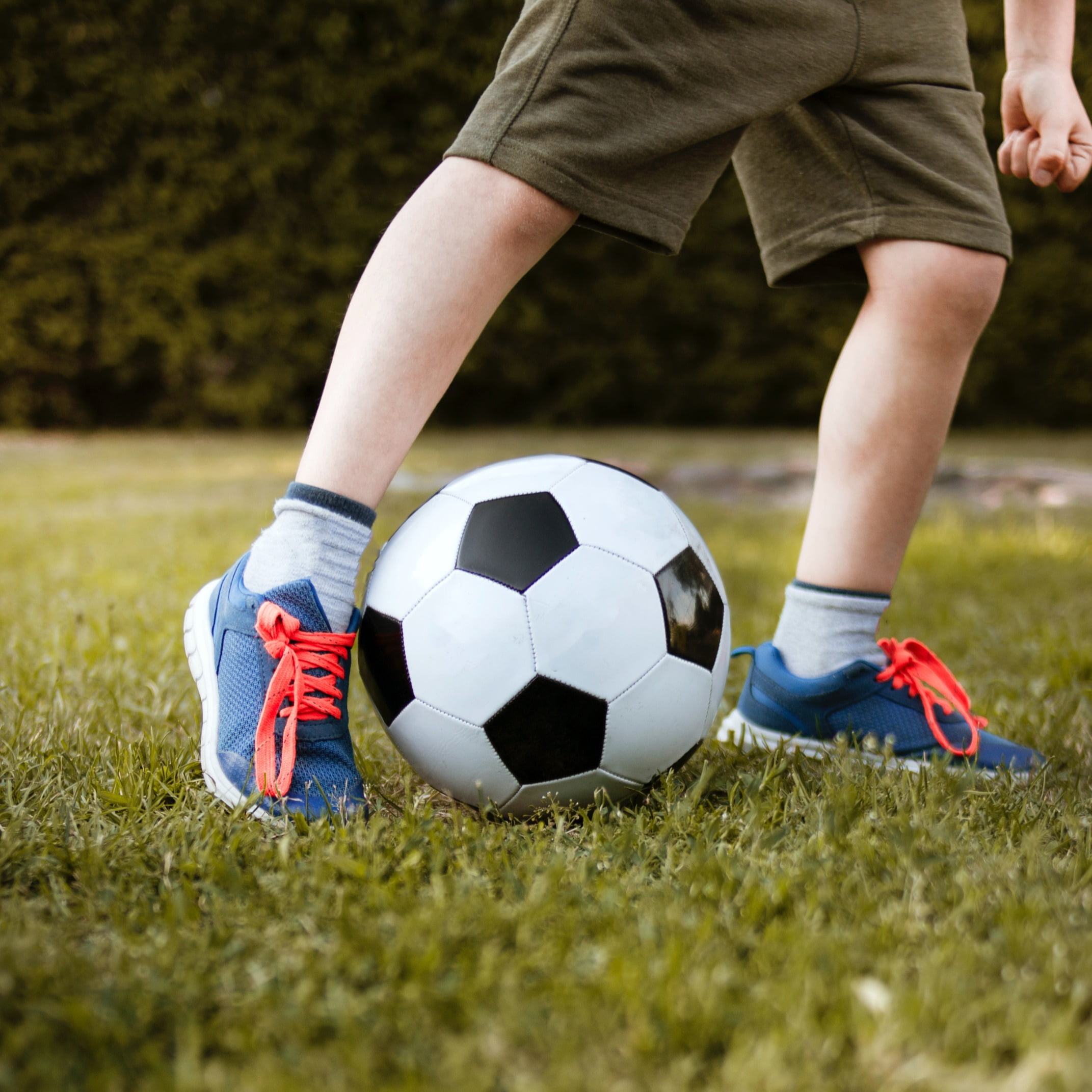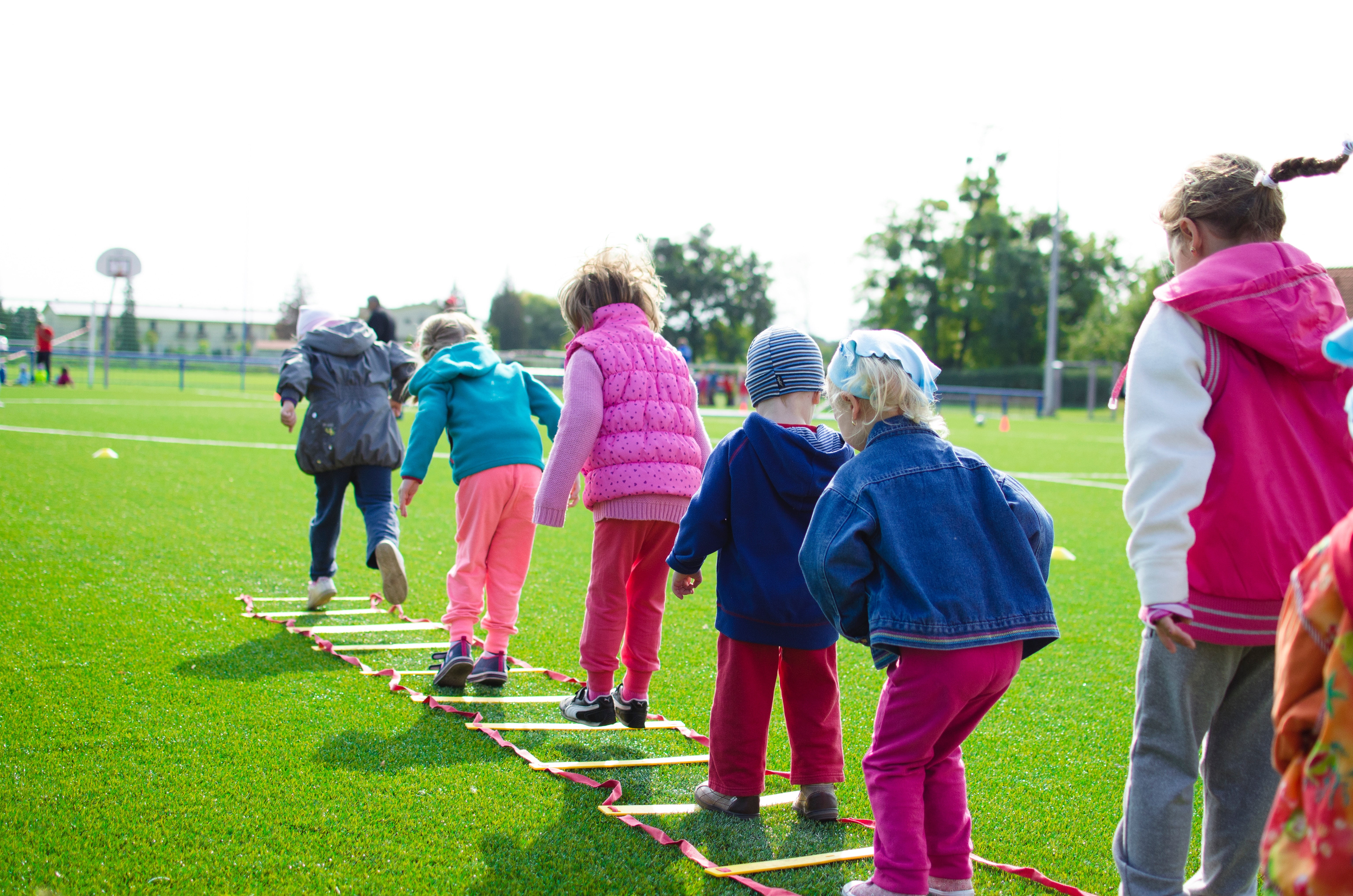Kids love to get outdoors and move. Plus the experts say there are many benefits for getting outside, such as; reduced anxiety, better sleep, improved focus and boosts in creativity. So, why not combine some time outdoors with maths games that kids of all ages are bound to love.
Here are 5 different outdoor games that combine physical activity and learning:
1. Number Bounce and Shoot
Place number cards on the ground (or draw numbers on the pavement using chalk). Ask students to answer a maths question or identify a number called out. They run to the number, bounce a ball that amount of times, then shoot a target before they run back (the target could be a basketball ring or just a circle drawn on a wall nearby).
2. Algorithm or Age Circuit:
Create a circuit (or ask a team of students to create the circuit) – think balancing, jumping, skipping, star jumps, over and under, ball throwing and catching, hopping etc.
Ask students to answer an algorithm/question, the answer is the number of times they must complete the circuit. For example, the teacher says, “What is 10 – 4?”, then the students say, “6” and complete the circuit 6 times). This game is a good one for focussing on subtraction or division questions because the answers tend to be smaller.
Adaptation for early learners: Ask them to complete the circuit the number of times that matches their age.
3. Number throw
Draw numbers on the ground or a wall in chalk (these numbers will be the answers to the questions). Ask a maths question, for example, “What is 5 + 6?”, and kids give the answer by throwing a ball at the correct number. (You can use a ball, beanbag or whatever you have available). Depending on the age of the child, this game can be adapted:
Early learners – Identifying numbers or matching numbers and words.
Kindergarten / Prep – Find the number that is one less, one more.
Grade 1-2 – Find partners that add to 10, doubling and halving numbers, adding 10 more.
Grade 3-4 – Adding and subtracting numbers within 100, times tables, combinations that add to 100.
Grades 5-6 – Times tables, subtraction from 100, identifying numbers with 6 or more digits, adding or subtracting fractions
(This would also work brilliantly with the alphabet drawn out and have kids spell out words too).

4. Times Table Basketball/Soccer
You will need a basketball ring or soccer goal for this one. Choose one times table to focus on (for example, 8 times tables). Randomly write all the answers on the pavement around the ring or goal. Ask students a times table, they find the answer and stand on the number, then either kick a goal or shoot a hoop from that position. Every time they get one in, they score a point. At the end of the game, ask them to multiply their score by the number they have been using to find their final total.
5. Outdoor Number line
Create a long line using chalk or a skipping rope. These are some ways you can use your number line:
- Create a number line going up by ones encouraging equal spacing. Then practise counting forwards and backward.
- Set a start and end number for your number line such as 0 and 20. Next use sticks, rocks or toys to plot values along the line, you might count by ones, twos or fives. Mix it up by changing the start and end number. For example, 0 to 100 or 40 to 60. (Tip: Always ask students ‘What number would be the halfway point in this number line?’)
- You could practise skip counting by jumping along the number line by 2s, 3s, 5s and the list goes on.
- Use the number line as a strategy to solve addition or subtraction questions. For addition, students can stand on the larger number and jump forwards to find their answer (for example, 7 + 9, stand on 9 and jump 7 numbers forward to land on the answer). For subtraction, students stand on the first number and jump backward to find their answer). Make it more challenging by starting your number line at a larger number.

Outdoor games are ideal to use as brain breaks throughout the day, as rewards for hard work or just some good old fashioned fun! So, we encourage you to get outside and enjoy learning together in the fresh air!
Before you head off get your hands on our FREEBIE: 6 ways to create maths lessons students love!



